Feb 7, 2022
Capital Campaigns | 9 Proven Strategies

What is a capital campaign?
Capital campaigns are concentrated efforts undergone by nonprofits to accomplish a high-impact fundraising goal. These campaigns generally raise money to fund a large-scale purchase, typically with price tags in the millions of dollars.
In general, capital campaigns are used to finance concrete projects with specific end dates. These projects might consist of land acquisition, building construction, or purchasing supplies either for the organization itself or on behalf of the nonprofit to be given to the community it serves.
There are three phases to a capital campaign: the planning phase, the quiet phase, and the public phase. During the quiet phase, nonprofits aim to raise 50-70% of their fundraising goal through major gifts acquisition. Once the capital campaign goes public, the remaining fundraising goal is met by soliciting smaller gifts from a large pool of donors.

The Planning Phase
1. Prepare your development department.
Consult with experts to estimate project expenses
Work with your development department to identify expenses your nonprofit will incur throughout your capital campaign. Be sure to consult with experts to make an accurate prediction of your campaign expenses. Your nonprofit might look toward your board, experienced staff members, or a fundraising consultant for expertise.
Perform prospect research
Prospect research describes the process of identifying promising leads for donor acquisition. During a capital campaign, your prospect research should focus on donors with high giving capacity to help reach your fundraising goal. Identify multiple prospects for donation who you’ll need to approach at each level of giving.
Conduct a feasibility study
During your capital campaign’s feasibility study, your nonprofit should interview 20-40 members of your community and board to assess their interest in participating in your capital campaign. Inform them of your intended fundraising goal, various giving levels you’ve identified, and any fundraising events you plan to host.
Determine capital campaign leadership
Throughout the planning phase, your nonprofit should clearly assign leadership roles to different members of your organization. A campaign chair should be assigned to oversee the project from the top down. Additionally, a planning committee and a steering committee should also be assembled to oversee more specific campaign tasks.
2. Craft a digital and direct communication strategy
Both digital and direct communication are important arms of your marketing strategy during your capital campaign. Through digital communication, your nonprofit may interact with donors online or via television. With direct communication, your nonprofit can access donors through physical means of communication, such as print advertising.
By combining these approaches, rather than focusing on just one, your nonprofit is able to reach a wide array of potential donors through multiple levels of engagement. When drafting your capital campaign’s marketing strategy during the planning phase, your nonprofit should consider some of these direct and digital marketing techniques.
Email. One way your nonprofit can connect with donors is via email. Your organization can segment donor lists to send only the most relevant messages to supporters. Additionally, your organization can use email as a way to make asks, direct supporters to online giving pages, and follow up with thank-you messages.
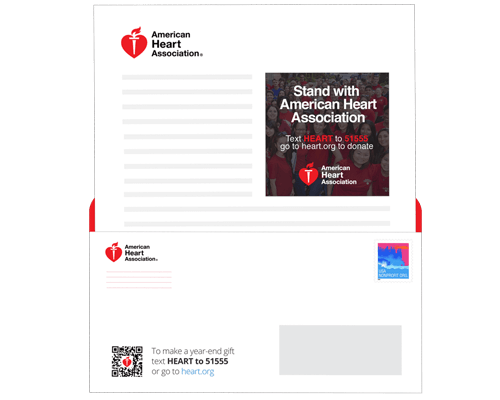
Direct Mail. Direct mail is one of the oldest marketing strategies, but your team shouldn’t discount it. Many potential donors appreciate having physical materials to consult for information on your capital campaign; similarly, some individuals prefer paper event reminders to keep dates related to your campaign fresh in their minds.
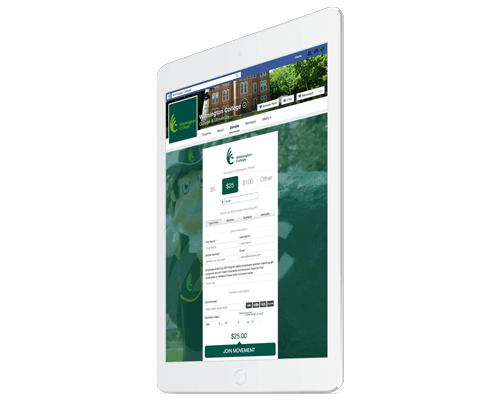
Social media. Interacting with supporters over social media is another great way to get the word out about your capital campaign. On your nonprofit’s various platforms, you can keep donors updated on fundraising events, share donation pages, and post impact videos to garner support from your followers.
3. Create a capital campaign website
Your capital campaign’s website will be the go-to resource for potential donors to consult before deciding whether or not to make their donation. Since capital campaigns typically have larger gift amounts, it’s doubly important for your website to be informative, highly navigable, and focused on directing visitors toward donation pages.
During the design process, your nonprofit should ensure that your web pages perform the following tasks effectively.
Consolidate campaign information. Your capital campaign’s website should house any relevant information a potential donor might want to know, such as dates of fundraising events, the campaign’s fundraising goal, suggested donation amounts, and more.
Accept donations for the capital campaign. Don’t forget to set up donation pages that visitors can use to give online. Your nonprofit should make donating as convenient as possible for your prospects, and easy online donation is a must.
Host your case for support. Donors will likely want to consult all available literature that your capital campaign has to offer, so be sure to make room for your case for support on your capital campaign’s website. In addition, be sure that the brochure is offered as a downloadable PDF that’s easily shareable by supporters.
Provide frequent campaign updates. Prominently display campaign updates on the website to help visitors keep up with your capital campaign. If visitors can see all that your nonprofit has in store for the campaign, they’ll get a better understanding of whether or not they’re interested in supporting your fundraiser.

By consistently branding their web pages, optimizing pages for desktop and mobile, and integrating their branding into their donation forms, the United Way ensures that donors have a seamless experience accessing their nonprofit online.
The Quiet Phase
4. Create a capital campaign brochure.
Another valuable resource for your organization to create is your capital campaign’s brochure. This brochure should contain a condensed version of the information found on the campaign’s website.
Additionally, it should break down the campaign’s overall goal in a tangible way so that readers clearly understand how their support will help your nonprofit reach your fundraising goal. Consider including the following features to make your capital campaign brochure an effective tool for your nonprofit.
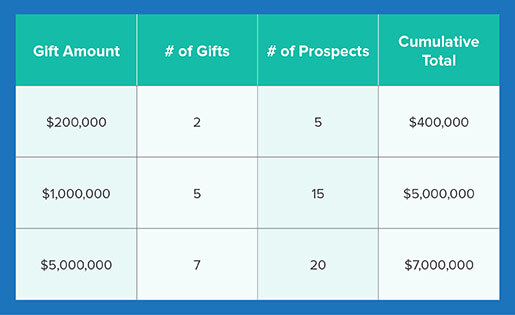
- Quotations. These might be from some of your major givers, members of your board, high-level staff, volunteers, or members of the community your organization serves.
- High-quality images. Feature high-quality images throughout the brochure, such as plans for your completed project, diagrams, images from fundraising events, and more.
- A campaign slogan. Your nonprofit may already have a slogan, but your capital campaign should have its own slogan as well. This individualizes your campaign as a separate effort from your overall fundraising goals.
- Donation impacts. Show donors the impact of their support with examples of how donations of different values will be put to use. This may influence donors to raise their gift amount once they see how far their donation will go, or nudge prospects on the edge towards giving.
- Branding. Connect your capital campaign to your organization’s overall mission by weaving branded colors, logos, typefaces, and more throughout your brochure. You want your capital campaign to be distinct, but don’t let readers lose sight of its connection to the big-picture of your nonprofit’s efforts.
Your nonprofit might consider adding a gift range chart to your capital campaign brochure. These helpful visual elements can easily break down the donation needs of your campaign for potential donors, giving them clear suggestions for the size of their gift.
5. Host major donor events
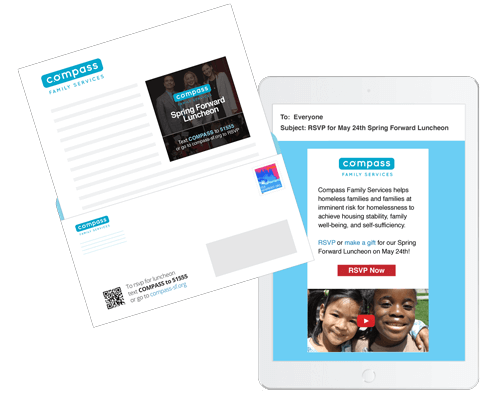
Major donor events are a powerful way to engage with your major donor prospects during your capital campaign. Through these events, your nonprofit can cultivate major donors by building lasting connections with them. However, these gatherings can also act as fundraising events in their own right.
Extend invitations to your major donors in person so they know your nonprofit values their support. Be sure to supplement these in-person invitations with digital invites to help them keep track of the event.
6. Build corporate partnerships.
Corporate partnerships are another powerful way to reach your capital campaign’s fundraising goal. Many corporations earmark money in the budget to go towards philanthropic initiatives, and because these organizations often have a high giving capacity, they’re great prospects for major gifts.
During your capital campaign’s quiet phase, consider the following strategies to kick start your fundraising efforts.
Challenge grants.
With a challenge grant, a corporation agrees to donate to your organization once you’ve reached a specific fundraising goal. They may match your fundraising progress, donate a percentage of funds raised, or donate up to a previously-specified dollar amount. Challenge grants are a great way to maximize the giving power of your supporters.
Corporate sponsorships.
A corporation may agree to sponsor your capital campaign’s fundraising events. This means they might cover event expenses, allow you to host the event on their facilities, donate prizes or giveaways for attendees, or otherwise contribute. These partnerships typically require that your nonprofit advertises the partnership in some way.
Matching gifts.
Many employers offer matching gift programs to employees in which they agree to match gifts donated by employees. They may partner with your nonprofit to match gifts to your organization specifically, or part of your fundraising strategy may be seeking out prospects who work for corporations with these programs.
The Public Phase
7. Launch a kickoff event.
To start the public phase of your capital campaign off with a bang, consider holding a kickoff event. This might be a gala, a walkathon, a concert, a tournament, or another community-centered gathering. Not only will this event help get the word out to potential donors, but your nonprofit can also use it as an opportunity to fundraise.

Live fundraising projection. Keep attendees informed on your fundraising progress by projecting live updates as you raise more and more money. One technique nonprofits often use is a live fundraising thermometer. The closer your get to your goal, the more encouraged attendees will be to donate.
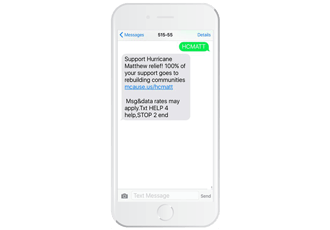
Mobile giving. With mobile giving, participants in your kickoff event can donate conveniently and quickly through their mobile devices. In addition, those who aren’t able to attend can give offsite and still be a part of the action. Use text keywords and branded short links in your texts to event participants to make giving from their mobile device event simpler.

Social media streaming. Be sure to stream your event on social media. For individuals who cannot make it, they can still remain involved and updated as the event progresses. Your social media pages should also feature clear fundraising prompts to allow viewers to easily donate from desktop or mobile.
8. Capitalize on social fundraising.
Another way to mobilize support during the public phase of your capital campaign is by capitalizing on social fundraising techniques. Since your nonprofit is trying to reach a larger number of prospects in this phase, social fundraising is a great way to leverage the networks of your existing supporters to your advantage.
Consider these two approaches to social fundraising that can help spread the word about your capital campaign.
Peer-to-peer fundraising. In a peer-to-peer fundraiser, individuals can run a campaign page on behalf of your organization in order to raise money for your capital campaign. Over the course of the fundraiser, these peer-to-peer participants can encourage friends to support their page by donating.

9. Steward your donors.
Throughout the public phase of your campaign, it’s important for your nonprofit to steward donors. The more you engage with donors, the more likely they will feel invested in your capital campaign. When it comes to your capital campaign, it’s especially important to keep donors engaged since the campaign period may be longer than normal.
Your nonprofit may consider these techniques when crafting your donor stewardship strategy.
Steward your donors.
Keep your campaign fresh in donors’ minds by updating them on campaign progress. If they see that your fundraiser is going well, they may be encouraged to help close the gap to reach your goal. If they see the campaign is advancing slowly, they may lend their support to help get the fundraiser moving.
Invite donors to a campaign celebration.
Inviting donors to campaign celebrations not only helps supporters get to know your organization better, but it creates a sense of community among donors. If donors feel closely tied to your nonprofit, they’ll be more inclined to extend their support. Campaign celebrations can also double as fundraising events.
Create impact videos.
Impact videos not only show donors how far their support can go towards your cause but also demonstrate that your capital campaign’s goals are tangible. Show potential donors that your nonprofit truly helps people and that their support directly uplifts the community your organization serves.
Related



